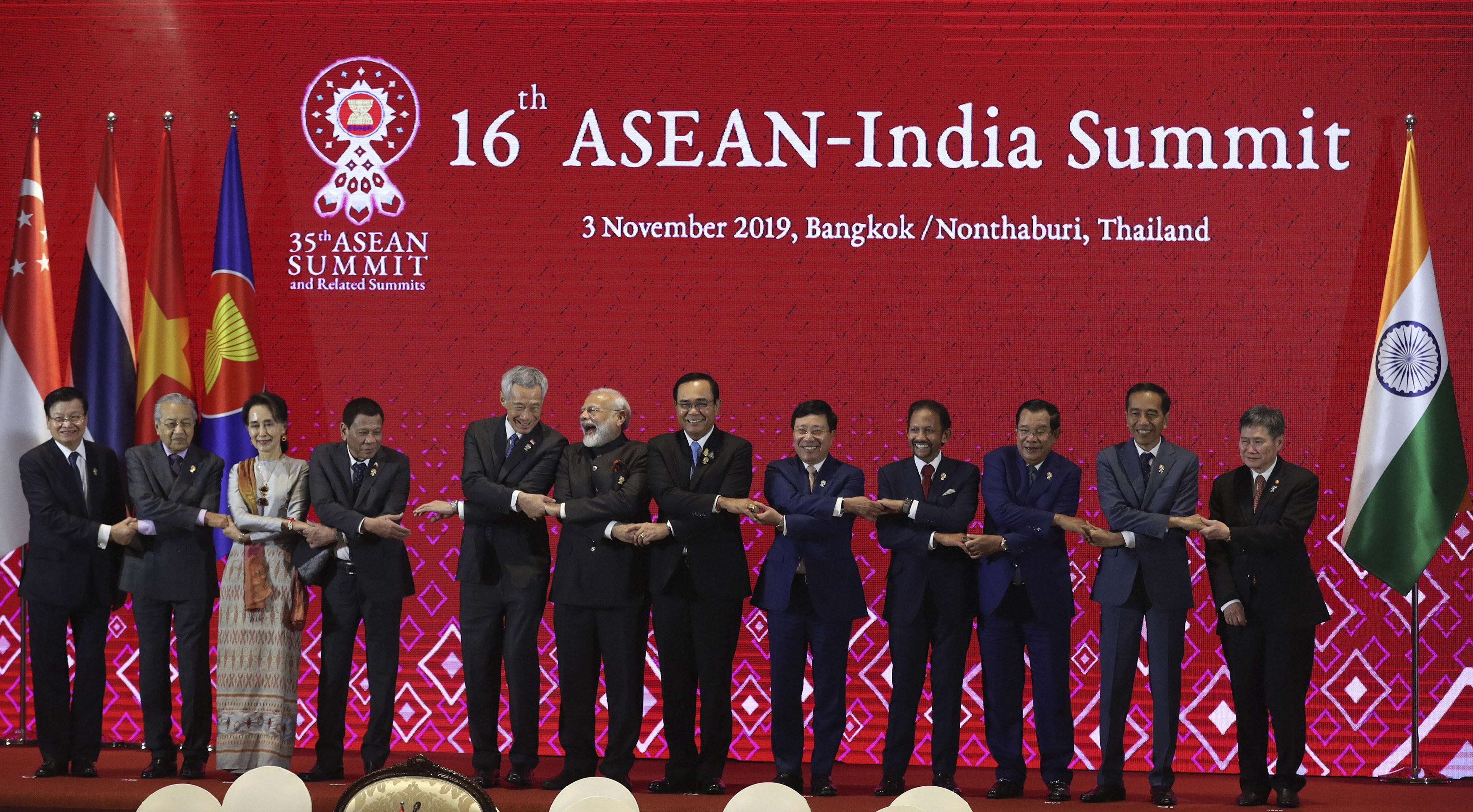
Why is India off RCEP: Massive trade deficit, fear of excessive imports

India had surprised participants late last year by abandoning the Regional Comprehensive Economic Partnership (RCEP) agreement. Prime Minister Narendra Modi had said he was withdrawing over concerns about how RCEP would affect the livelihoods of Indians, particularly the most vulnerable.
India, though, will be allowed to rejoin the trade pact.
What’s the pact all about?
Asia Pacific nations including China, Japan and South Korea on Sunday (November 15) signed the world’s largest regional free-trade agreement, encompassing nearly a third of the world’s population and gross domestic product.
Top officials from 15 nations, also including Australia, New Zealand and the 10 members of the ASEAN, inked the RCEP pact. It was signed on the final day of the 37th ASEAN Summit hosted virtually by Vietnam
The countries which signed the RCEP agreement include China, Japan, South Korea, Australia, New Zealand, and the 10 members of the ASEAN: Brunei, Vietnam, Laos, Cambodia, Thailand, Myanmar, Malaysia, Singapore, Indonesia, and the Philippines.
Also read: Enhancing connectivity with ASEAN a major priority for India: PM Modi
Supporters of the trade pact, which covers 2.2 billion people with a combined GDP of $26.2 trillion, said it will bolster pandemic-weakened economies by reducing tariffs, strengthening supply chains with common rules of origin, and codifying new e-commerce rules.
Among the benefits of the agreement include a tariff elimination of at least 92% on traded goods among participating countries, as well as stronger provisions to address non-tariff measures, and enhancements in areas such as online consumer and personal information protection, transparency and paperless trading, according to a statement issued on Sunday by Singapore’s Ministry of Trade and Industry.
It also includes simplified customs procedures while at least 65% of services sectors will be fully open with increased foreign shareholding limits.
Why India’s exited
India has maintained that the China-backed trade agreement has failed to address its concerns. New Delhi says RCEP pacts were a threat to the circumvention of rules of origin due to tariff differentials. India had sought for fair agreement on the trade deficit and opening of services’ norms.
Also read: India’s ‘no’ to RCEP only for now, pressure on to exit for good
Another major reason for India pulling out of the RCEP was that the deal would have brought down the import duties on goods by 80-90 per cent. Industry experts feared that this may result in a flood of imports which have a massive trade deficit.
Apart from this, during the previous negotiations, India had raised the issue of unavailability of Most Favoured Nation (MFN) obligations. Through this, the Indian government would have been forced to give similar benefits to RCEP nations that it used to give to others. Also, India even raised a red flag on the use of tariff reduction’s base year, which was kept as 2014.
Impact India’s economy
Experts opine that India may lose massive investments, as it may have been the third-biggest economy. Also, analysts believe that if India had signed the agreement, its vulnerable sections’ consumers would have been impacted by paying more for goods.
Another major lookout for India is how it will tackle the ASEAN countries in trade, after backing out from the RCEP. Citing the reason for this concern is India’s ‘Act East Policy’, which will be impacted after these Asia-Pacific nations strengthen their ties with China, Australia, Japan, and others.
During the United Progressive Alliance tenure, the Indian government agreed to explore an India-China FTA in 2007, and joined RCEP negotiations with China in 2011-12. Following this, the trade deficit with RCEP countries rose to $78 billion in 2014 from $7 billion in 2004.
Also read: Commerce Ministry seeks stakeholder suggestions for next foreign trade policy


